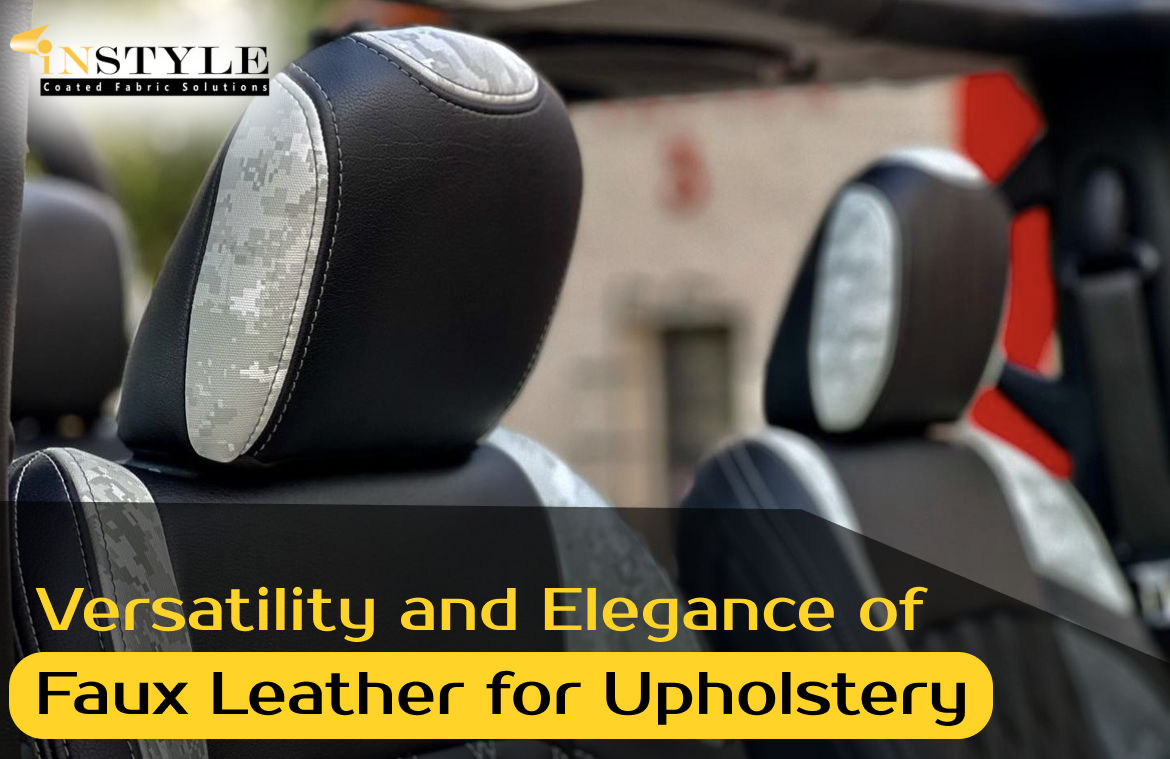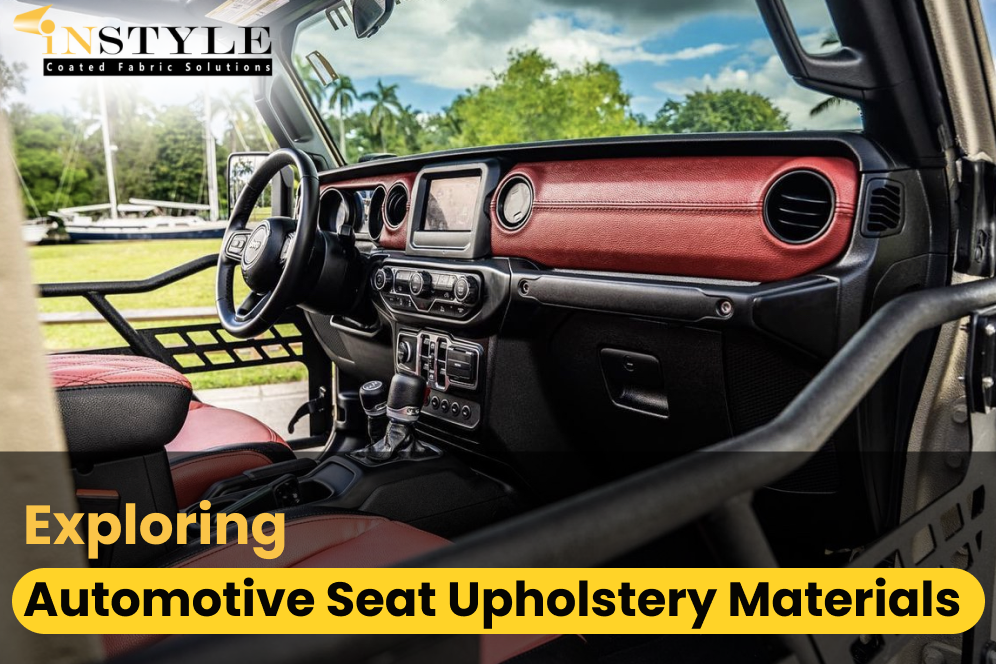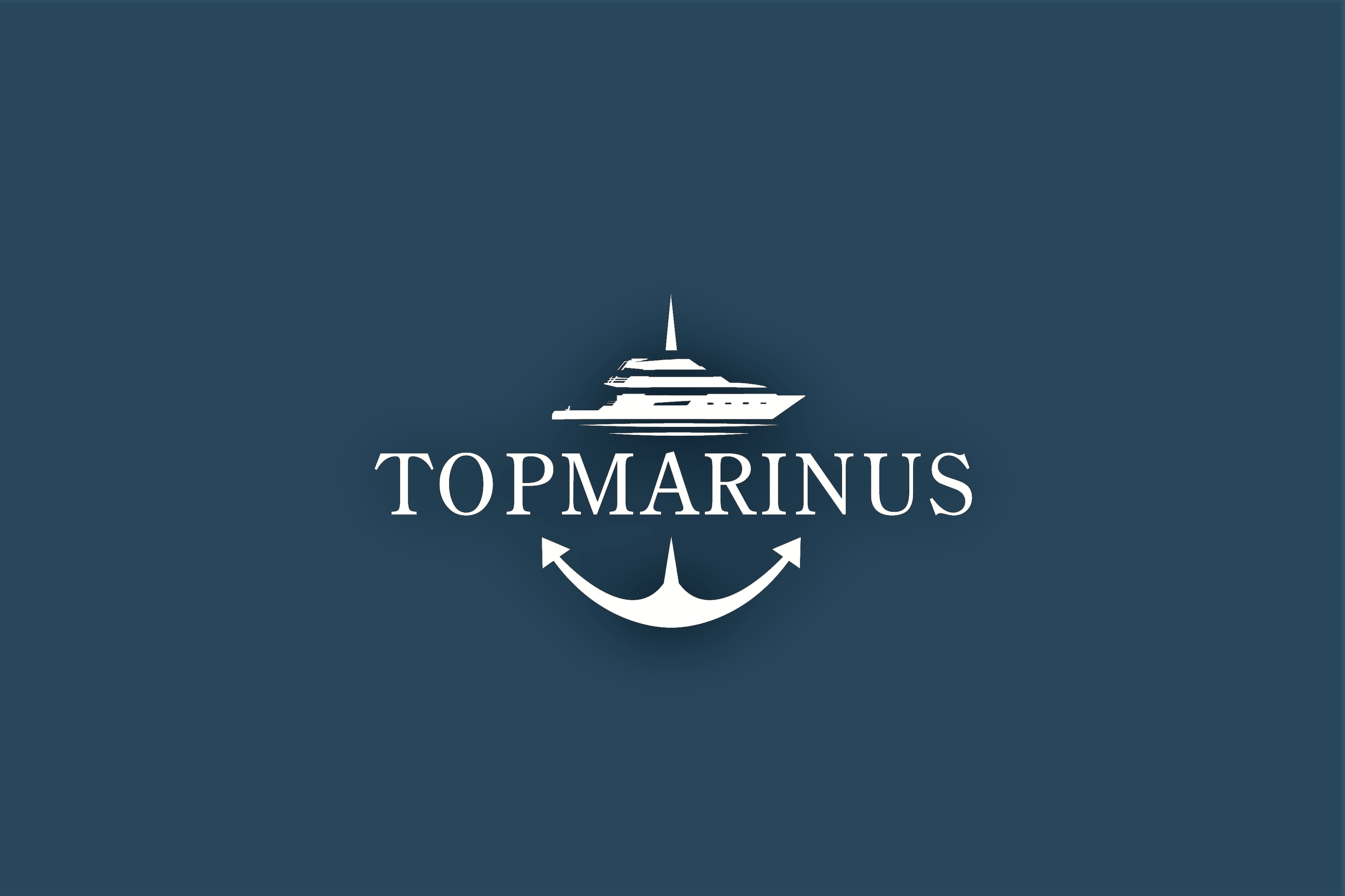In the realm of interior design, the choice of faux leather for upholstery plays a pivotal role in defining the ambiance and aesthetics of a space. Among the myriad options available, faux leather emerges as a versatile and elegant choice, seamlessly blending style with practicality. Whether adorning furniture in homes, offices, or commercial establishments, faux leather material for upholstery offers a myriad of benefits that cater to both aesthetic preferences and functional needs.
Understanding Faux Leather:
Faux leather, also known as synthetic leather, artificial leather, or leatherette, is a man-made material designed to mimic the appearance and texture of genuine leather. Crafted from various synthetic compounds, such as polyurethane (PU) or polyvinyl chloride (PVC), faux leather undergoes processes that enhance its durability, texture, and visual appeal. This manufacturing versatility allows for a wide range of finishes, from smooth and sleek surfaces to textured patterns resembling natural leather grains.
The Appeal of Faux Leather for Upholstery:
- Aesthetic Elegance: Faux leather exudes sophistication and luxury, making it a popular choice for upholstery projects seeking a refined look. Also, Its smooth surface and rich tones emulate the timeless allure of genuine leather, adding a touch of opulence to any interior setting.
- Versatility in Design: Faux leather offers versatility in design, available in an extensive array of colors, textures, and patterns. This versatility allows for endless customization possibilities to suit diverse stylistic preferences and interior themes, seamlessly integrating into various design schemes and enhancing overall aesthetic appeal. Discover the endless possibilities of faux leather upholstery designs. Explore our collection and find the perfect match for your interior decor!
- Durability and Longevity: Unlike natural leather, faux leather is resistant to scratches, stains, and fading, ideal for high-traffic areas or environments prone to spills and moisture. Moreover, It’s robust construction ensures longevity, maintaining its pristine appearance. Even after prolonged use, it provides a cost-effective solution for durable and resilient upholstery projects.
- Ease of Maintenance: Faux leather upholstery is relatively low-maintenance, requiring simple cleaning routines to preserve its beauty and integrity. Regular wiping with a damp cloth or mild soap solution removes dirt and spills without the need for specialized leather care products or treatments.
- Affordability: In addition to its aesthetic and functional benefits, faux leather is generally more affordable than genuine leather. This cost-effectiveness enables individuals and businesses to achieve luxurious upholstery designs within budgetary constraints, enhancing the overall value proposition. Achieve luxurious upholstery designs without breaking the bank.
- Environmental Sustainability: Faux leather upholstery is often considered a more environmentally friendly option compared to genuine leather. Also, as it is typically made from synthetic materials, it reduces the demand for animal hides and minimizes the environmental impact associated with traditional leather production processes. Moreover, Choosing faux leather can align with eco-conscious values and contribute to sustainable design practices.
Applications of Faux Leather Material for Upholstery:
The versatility of faux leather extends beyond residential spaces to encompass a wide range of commercial and hospitality settings, including:
- Residential Interiors: Sofas, armchairs, ottomans, headboards, dining chairs, recliners, bar stools, and benches.
- Commercial Spaces: Office furniture, restaurant seating, hotel lobby furnishings, hotel lobbies and rooms, fine dining restaurants, education institutions, office interiors, stadium seating, commercial indoor seating, conference centers, libraries, art galleries, co-working spaces.
- Automotive Interiors: Car seats, door panels, steering wheel covers, center consoles, gear shift covers, dashboard covers, armrests, and sun visors.
- RV (Recreational Vehicle) Living Spaces Interiors: RV sofas, dinettes, captain’s chairs, bed frames, and interior wall paneling.
- Marine Indoor and Outdoor Upholstery: Boat seating cushions, cabin interior upholstery, yacht furnishing padding, helm chairs, deck cushions, cockpit seating, pontoon boat seats, sun pad cushions, bow cushions, aft seating, lounge seating, captain’s chairs, bench seating, boat mattresses, helm station seating, transom seating, dock seating, boat interior wall paneling, marine headliner upholstery, boat cockpit covers, boat enclosure curtains, boat seat covers, boat canopy upholstery, mega yacht interior interior design seat covers, cruise ship seating upholstery, river cruise seating padding, expedition vessel interiors upholstery and other marine upholstery items.
- Aviation Upholstery: Aircraft seats, cabin wall panels, headliners, armrests, and interior trim.
- Hospitality Upholstery: Seating, sofas, chairs, armchairs, benches, banquettes, stools, ottomans, booth seating, lounge seating, loveseats, sectional sofas, chaise lounges, recliners, bar stools, dining chairs, outdoor furniture cushions, and other furniture items.
- Healthcare Upholstery: Hospital beds, patient chairs, waiting room seating, examination tables, treatment room furniture, medical office chairs, therapy benches, dental chairs, chiropractic tables, massage chairs, behavioral health furniture, bariatric seating, healthcare facility sofas, recovery room seating, hospice furniture, medical waiting room benches, pediatric seating, senior care chairs, and other furniture items.
Conclusion:
Faux leather for upholstery epitomizes the perfect synergy of style, functionality, and affordability. It offers a compelling alternative to genuine leather without compromising on quality or aesthetic appeal. Moreover, Its versatility, durability, and ease of maintenance make it a preferred choice for designers, homeowners, and business owners alike, seeking to elevate interior spaces with elegance and practicality. Whether embarking on a residential renovation project, outfitting a commercial establishment, or designing for cruise lines, boats, or automotive interiors, embracing faux leather upholstery opens doors to endless design possibilities, enriching environments with timeless sophistication and enduring charm. Explore our collection of sustainable, eco-friendly marine-grade faux leather upholstery for even more options to enhance your projects.










